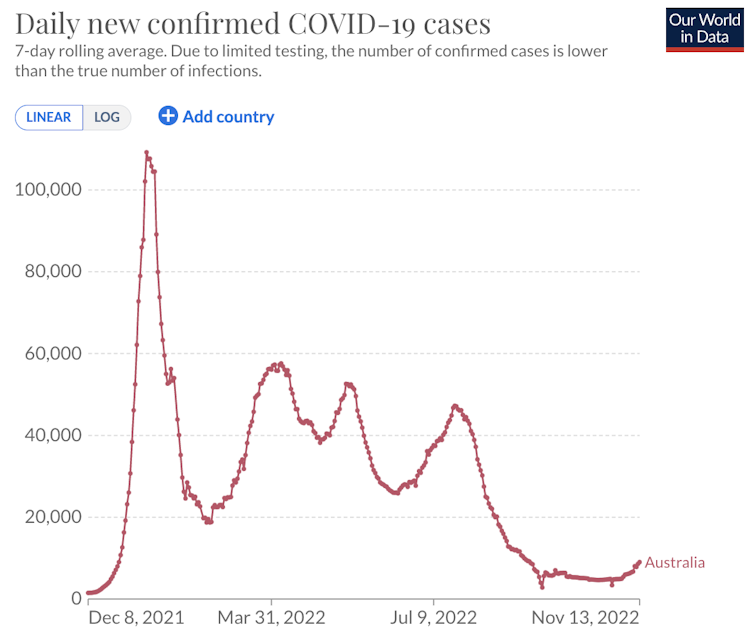What can we expect from this latest COVID wave? And how long is it likely to last?
- Written by James Wood, Associate Professor, epidemiological modelling of infectious diseases, UNSW Sydney

Australia is now mid-way into its fourth wave of COVID in the Omicron era, driven by a rich soup of Omicron descendants. Unlike previous waves, where a single new variant of SARS-CoV-2 variant such as BA.2 or BA.5 was responsible, we have had an explosion of new variants[1] such as XBB.1, BQ.1.1 and BR.2.1.
Read more: From Centaurus to XBB: your handy guide to the latest COVID subvariants (and why some are more worrying than others)[2]
However, despite this apparent diversity, these new variants all follow a similar script, where the same set of changes have evolved independently across multiple variants. This is called convergent evolution.
These changes make the virus better at infecting people with immunity to existing variants. Since mid-October, the subvariants’ ability to escape immunity from vaccination and/or previous infection has been potent enough to cause a new wave in Australia.
The graph below shows the series of 2022 waves, with the original Omicron the first wave, followed by the double-bump BA.2 (where Western Australia had different timing), the winter BA.5 wave, and now a new upswing in November.
















